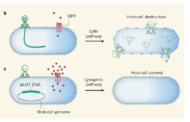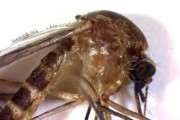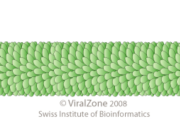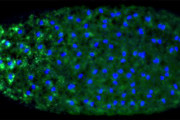 Global-health researchers look to supplement traditional tactics to reduce the health and economic impacts of food-borne pathogens.
Global-health researchers look to supplement traditional tactics to reduce the health and economic impacts of food-borne pathogens.
Food-borne viruses, bacteria and protozoa caused some 582 million cases of intestinal infection and 351,000 deaths in 2010, according to new figures from the World Health Organization (WHO).
The agency, which released the data on 2 April, recommends common-sense measures to lessen the health and economic toll of illnesses caused by bacteria, viruses, parasites and chemicals in food. These steps include improving basic sanitation, building government capacity to track cases of foodborne illness, and ensuring that health workers are trained and equipped to treat the sick.
Efforts are now accelerating to complement such tactics by developing vaccines against some common foodborne microbes. Takeda, a pharmaceutical firm based in Osaka, Japan, is testing a potential vaccine against norovirus in phase II clinical trials, after researchers demonstrated its efficacy against several common viral strains1. And the Bill & Melinda Gates Foundation of Seattle, Washington, has committed US$50 million since 2007 to a consortium seeking to develop vaccines against two foodborne bacteria, Shigella and enterotoxigenic Escherichia coli (ETEC). The foundation plans to spend another $64 million on the programme to 2018.
Studies suggest that vaccination can produce immediate, cost-effective results and build immunity in a population2, whereas sanitation programmes are harder to implement broadly and take longer to achieve modest improvements3.
“We need vaccines to complement changes in water- and food-hygiene behaviour,” says Deborah Atherly, a health economist at PATH, a non-profit global-health organization in Seattle, Washington.
Vaccines against intestinal (or ‘enteric’) illnesses are in varying stages of development. Takeda is one of several firms targeting norovirus, and its vaccine is furthest along. The microbe, which makes headlines when it plagues cruise-ship holiday-makers, is a serious public-health problem. Norovirus causes gasteroenteritis, a diarrhoeal disease that kills more than a million people a year. In 2010, 35,000 of those deaths came from norovirus transmitted through food, according to the WHO.
A handful of vaccines against foodborne illness are already in use. The WHO added a vaccine for rotavirus, which causes gastroenteritis, to its list of recommended immunizations in 2013, after reviewing evidence that the shot can be up to 90% effective in preventing the disease for a year after vaccination. The agency estimates that rotavirus killed roughly 453,000 children globally in 2008.
The economics of developing vaccines for foodborne illness are relatively clear for microbes that affect both developed and developing nations. For example, the US Centers for Disease Control and Prevention estimates that a norovirus vaccine could avert 1 million to 2.2 million cases of illness in the United States each year. If that vaccine were effective for two years, it could save up to $2.1 billion in treatment costs, the agency says4.
But for diseases not common in developed countries, it is harder to persuade businesses or governments to spend money on vaccine development or to expand the use of existing ones. Some researchers are hopeful that more data — such as the latest WHO figures, the first data from a nine-year agency monitoring project — could marshal support for related vaccine development.
“Seeing the figures for what kind of costs these under-reported diseases have and how they’re transmitted will be a strong signal to countries and companies to care about them,” says Ramanan Laxminarayan, a health economist at the Center for Disease Dynamics, Economics & Policy, a think tank in Washington DC.
Boer Deng
Source: Nature














